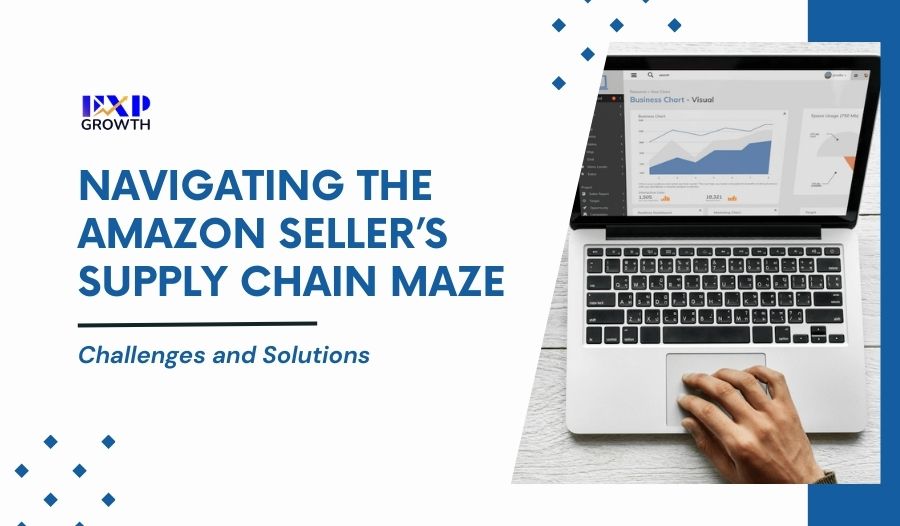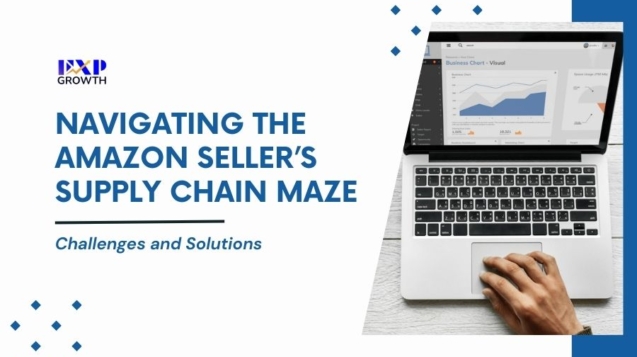1. Difficulty in Forecasting Demand: Mastering the Art of Anticipation
Problem:
A seller underestimates holiday demand.
Solution:
Utilize Amazon’s Demand Forecast tools, analyzing historical data and trends to make accurate predictions. Ensure proactive planning for peak seasons to meet increased demand seamlessly.
2. Managing Seasonal Variations: Optimize Inventory for Peak and Troughs
Problem:
Excess inventory after a seasonal peak.
Solution:
Implement a dynamic pricing strategy to incentivize purchases during off-peak seasons. Adjust inventory levels strategically to avoid overstocking, minimizing storage costs while maximizing sales opportunities.
3A. Supplier Reliability Issues: Navigating the Consistency Challenge
Problem:
The supplier delivers inconsistent products.
Solution:
Diversify suppliers, establish clear communication channels, and maintain safety stock for emergencies. Ensure a robust supplier network to minimize disruptions and maintain product quality.
3B. Inadequate Supplier Communication: Streamlining Communication for Timely Restocking
Challenge:
Seller C experiences delays due to poor communication with suppliers.
Solution:
Establish clear communication channels with suppliers, utilizing Vendor Central for direct communication. Employ automated alerts to streamline restocking needs and ensure timely communication for efficient operations.
4. High Storage Costs: Maximizing Efficiency in Warehousing
Problem:
Accumulating storage fees.
Solution:
Optimize inventory levels, use Amazon’s FBA to minimize storage costs, and negotiate better storage rates. Employ efficient warehousing strategies to strike a balance between cost-effectiveness and product availability.
5. Excess Inventory Costs: Dynamic Strategies for Inventory Optimization
Challenge:
Seller E is burdened with storage fees due to excess inventory.
Solution:
Employ a dynamic pricing strategy, run promotions, and offer bundles to efficiently move excess inventory. Leverage Amazon’s FBA to reduce storage costs, ensuring optimal inventory levels.
6. Shipping and Lead Time Issues: Enhancing Logistics Efficiency
Challenge:
Seller D encounters shipping delays, affecting inventory replenishment.
Solution:
Diversify suppliers to mitigate shipping delays. Opt for Fulfilled by Amazon (FBA) to leverage Amazon’s efficient shipping services. Utilize Seller Fulfilled Prime (SFP) for faster and more reliable delivery.
7. Overstocking or Understocking: Precision in Inventory Management
Problem:
Running out of stock during high demand.
Solution:
Employ inventory management software, set reorder points, and adopt a just-in-time approach. Ensure a streamlined inventory process to prevent both overstocking and understocking scenarios.
8A. SKU Proliferation Complexity: Streamlining Product Variations
Problem:
Managing numerous product variations.
Solution:
Rationalize product variations, consolidate SKUs, and focus on high-performing items. Streamline your product catalog to simplify management and enhance operational efficiency.
9B. Inefficient SKU Management: Organizing and Tracking Varied Products
Challenge:
Seller F struggles with organizing and tracking various SKUs.
Solution:
Implement SKU rationalization by grouping similar products. Use unique identifiers and leverage Amazon’s inventory templates for efficient SKU management, ensuring clarity and organization.
10. Poor Performance of Slow-moving Products: Boosting Visibility and Sales
Challenge:
Seller G has slow-moving items affecting overall sales and tying up capital.
Solution:
Run targeted advertising campaigns, offer discounts, or bundle slow-moving products with fast-moving items. Increase visibility and sales for slow-moving items to optimize overall inventory performance.
11. Lack of Real-time Inventory Visibility: Timely Updates to Prevent Stockouts
Challenge:
Seller H lacks real-time updates on inventory levels, leading to stockouts.
Solution:
Integrate inventory management software that syncs with Amazon’s API for accurate, real-time inventory tracking. Utilize restocking alerts to ensure timely updates and prevent stockouts.
12A. Inaccurate Demand Forecasting: Embracing Precision in Predictions
Problem:
Overestimating demand leads to excess.
Solution:
Leverage machine learning tools for demand prediction, refining forecasts regularly based on market shifts. Embrace data-driven insights to enhance the accuracy of demand forecasts and optimize inventory levels accordingly.
12B. Inaccurate Demand Forecasting for New Products: Strategic Market Entry
Challenge:
Seller I struggles to gauge demand for new, unique items.
Solution:
Conduct comprehensive market research, leverage Amazon’s Early Reviewer Program, and run Sponsored Product ads to gauge interest. Start with a smaller inventory for testing and refine forecasting based on initial product performance.
13. Long Lead Times: Accelerating the Supply Chain Timeline
Problem:
Overseas suppliers causing delays.
Solution:
Identify local suppliers, negotiate shorter lead times, and utilize air freight if needed. Streamline the supply chain by minimizing lead times to meet market demands swiftly.
14. Poor Communication with Suppliers: Building Robust Partnerships
Problem:
Misunderstandings leading to shortages.
Solution:
Establish clear communication channels, use technology to track orders, and maintain relationships. Transparent and effective communication is key to preventing supply chain disruptions.
15. Cash Flow Constraints: Financial Strategies for Inventory Management
Challenge:
Seller J faces challenges in financing large inventory purchases.
Solution:
Consider Amazon’s lending programs, explore short-term financing options, and optimize pricing and promotions to generate quick sales and cash flow. Implement financial strategies for effective inventory management.
16. Fierce Competition: Winning the Buy Box Battle
Problem:
Losing the Buy Box due to high prices.
Solution:
Monitor competitor prices, optimize listings, and consider Amazon’s advertising options. Stay competitive by adapting pricing strategies and leveraging Amazon’s tools to enhance visibility and win the Buy Box.
Navigating the complexities of the Amazon seller’s supply chain requires a strategic and proactive approach. At ExpGrowth, we understand these challenges and provide tailored solutions to ensure a seamless and efficient supply chain for your Amazon business.












